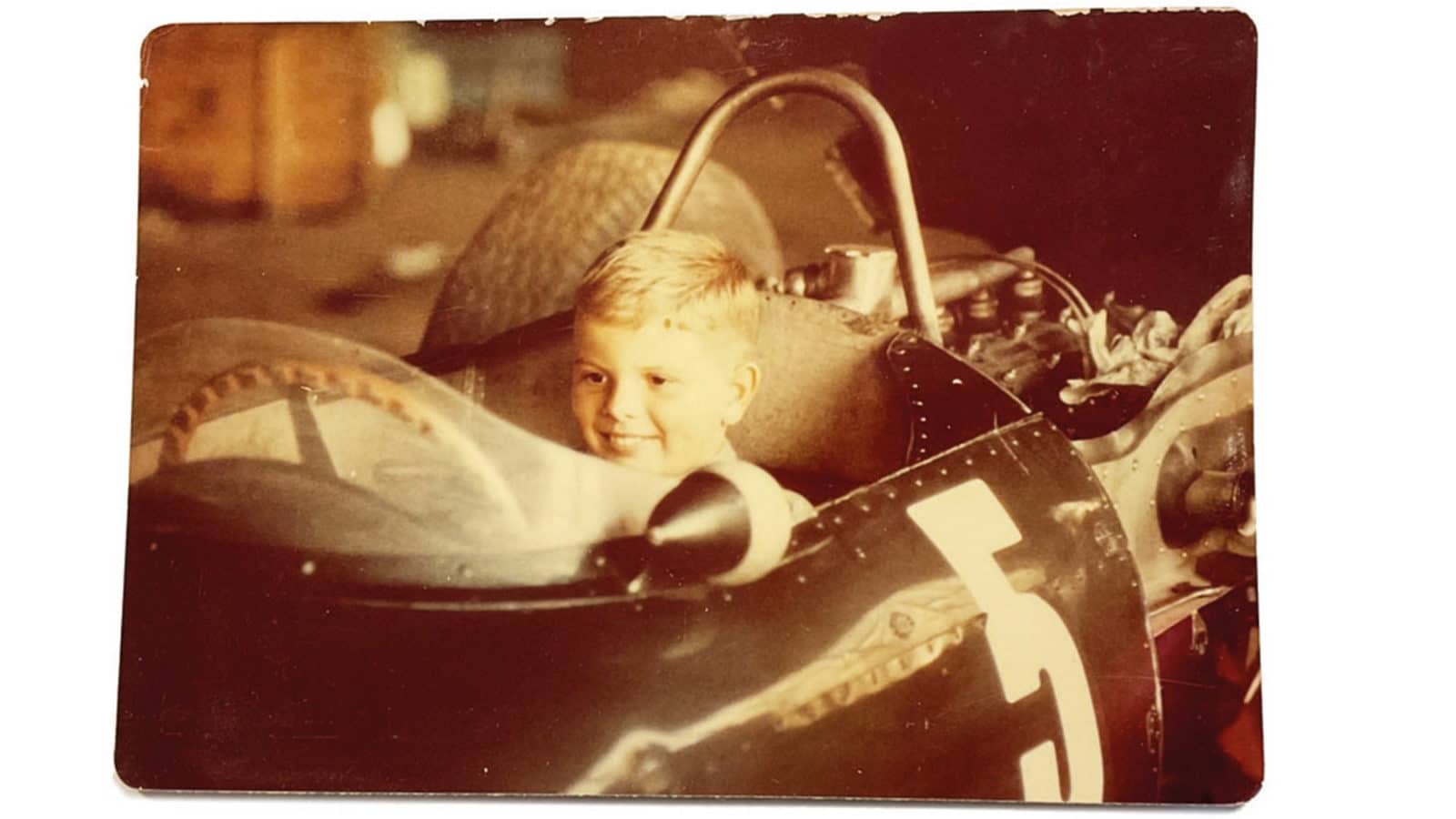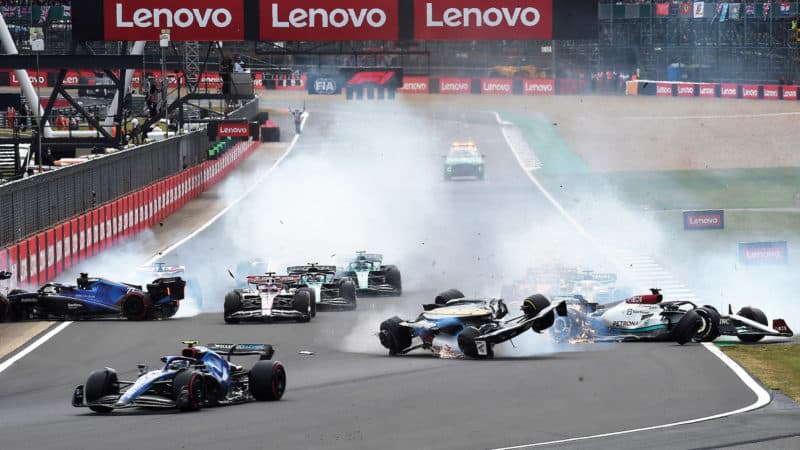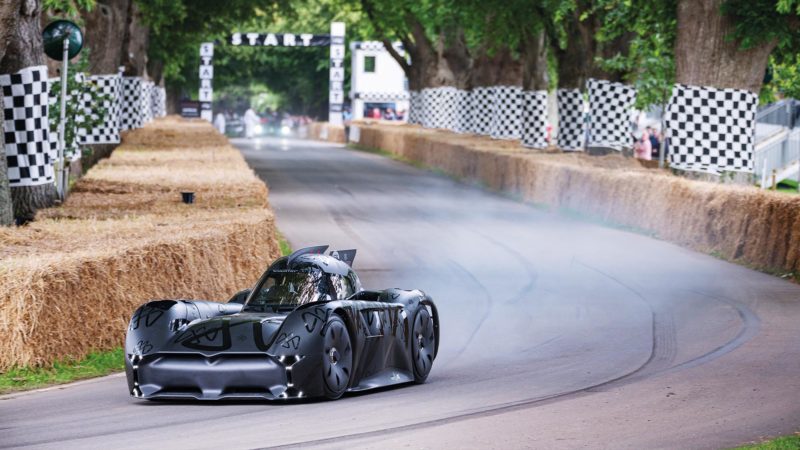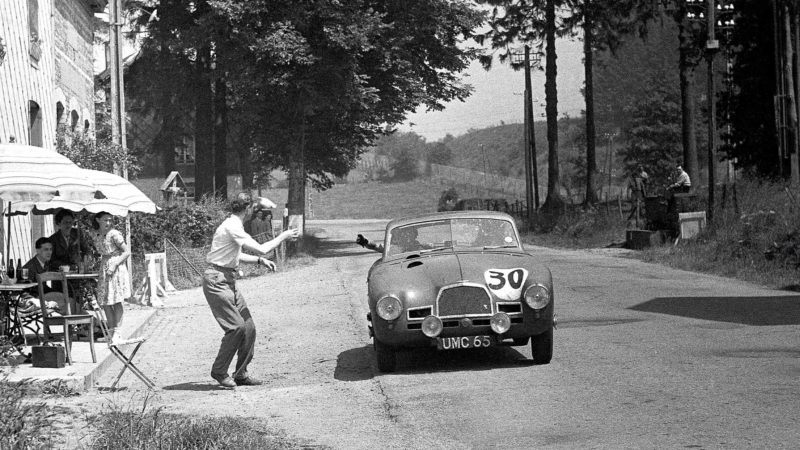Letters, September 2022

A young and very pleased Bill Wilcox in Tony Brooks’s BRM P57, Watkins Glen, 1961
I read with interest your recognition of the recent passing of Tony Brooks [Matters of Moment, July]. As an eight-year-old, I travelled to Watkins Glen with my father to experience the 1961 US Grand Prix. Dad, an avid motor sport enthusiast, immigrated to Canada from England in 1949 and had maintained a friendship with BRM mechanic Dennis Perkins. Arriving at the Glen, we met Dennis and the rest of the team in the paddock. No doubt, I was thrilled when he asked if I would like to sit in Tony’s BRM P57 (above). As the years pass, I am reminded once again of F1’s gentler times.
Bill Wilcox
Cobourg, Ontario, Canada
I am somewhat puzzled, if entertained, by Doug Nye’s comments in August [The Archives] re historic racing. I agree that modern safety equipment can look incongruous when matched with older vehicles, but if that’s the price of them being allowed to continue to compete (particularly bearing in mind that there can be inherent risks with these cars) then so be it. Doug praises the proposal by Jason Wright of an “invitation demonstration” series – well, that might well be good to watch, but it won’t be racing, and I want to see historic competition vehicles competing. I’m surprised that someone of Doug’s stature feels differently.
I am further puzzled by his seeming put-down of amateur drivers in historic racing. There are very many talented amateurs competing, and even those with less ability surely deserve the right to have their fun. Yes, it’s a shame if valuable machines are damaged, but that’s the price of competition. Perhaps there are cases of drivers who are not up to their vehicles, in which case some further monitoring of drivers might be needed. He refers to the Monaco Historic event – I’m sure that it might attract some ‘poseurs’, even among the drivers, but the majority are enthusiasts lucky enough to compete with these cars. In any case, his reference to Mick Schumacher’s Monaco accident seems to negate his point, as it demonstrates that top professionals can also have accidents.
John Opie
Redruth, Cornwall

A few shaken drivers, but there were no serious injuries or fires at the Turn 1 crash at Silverstone
Grand Prix Photo
While the FIA’s safety rules regarding the halo are rightly credited as being lifesavers, especially following Zhou Guanyu’s rollover crash in the British Grand Prix, let’s not forget one thing. All the cars in the Silverstone first-lap incident had full fuel tanks, and there was no fire. Well done FIA.
Bruce Grant-Braham
Wimborne, Dorset

Are straw bales enough protection at the Goodwood Festival of Speed?
Joshua Pawlowski
Having not missed a Festival of Speed since its inception, this year I enjoyed more than any other. However I am left extremely concerned about the ‘Shootout’. The excitement of this event is undeniable but the reality of my daughter and I standing by the speed trap to watch a car pass at over 149mph with only straw bales between us chilled me. Le Mans of 1955 could so easily become the second most tragic motor sport event.
Graham Matthews
East Sussex

Louis Klemantaski’s famous shot of Lance Macklin reaching for a cold beer in the Spa
24 Hours in 1949
Klemantaski Collection/Getty Images
I read the review of Jack Barlow’s book on Lance Macklin [Disaster aside…, August] with great interest. In Louis Klemantaski’s 1949 photo of Macklin stopping his Aston Martin DB2 at the Masta straight café for a snatched glass of cold beer, below right, the spectator handing it to him was another old friend of Klem’s – the amateur racer Charles Lewis.
Lewis was cut from the same cloth as Macklin, charming and unreliable with a motoring life which included ownership of the 16-cylinder Maserati, the Bugatti Royale (pictured by Klem again at Brighton Speed Trials with a policeman inspecting it) and the Tojeiro-Jaguar, which cost Charles’s sister-in-law her life at Brighton.
Fifty years ago I bought a tin trunk in Portobello Road which turned out to be full of the house-clearance detritus of Charles Lewis’s convoluted life. It was bulging with letters, photos of hundreds of cars as well as his own short stories. It also included much that he had written about the Duke of Windsor and Wallis Simpson, springing from his assistance to them during their postwar exile in Antibes.
I still have it all. As a writer, I briefly considered turning it into a non-fiction account but in the end decided that nobody would believe it so instead used some of it as the fuel for a novel, Knowing Max.
That prompted some unexpected letters from old racing comrades who quickly recognised who Max had to be.
James Long
Blagdon, Somerset
In the Nineties I attended the German GP at Hockenheim, and spectated from the back country part of the circuit. I was taken aback by the number of German spectators who set off rockets each time Michael Schumacher drove past. Quite dramatic, and it added to the atmosphere (figuratively, and literally). But the behaviour of Verstappen fans at this year’s Austrian GP takes this to an unacceptable level. Setting off flares to the extent that clouds of orange smoke waft over the circuit risks affecting drivers’ vision. Marine flares have to be treated with circumspection – not sure
I would want someone, possibly high on energy drinks or booze, setting one off next to me! Time for pyrotechnics at the race track to be banned, I feel.
Paul Smiddy
Woodbridge, Suffolk
I know Motor Sport didn’t cover drag racing way back then, but reading Mike Dodman’s letter last month reminded me of when I covered the early events at Santa Pod and most of the others run by the NDRC for a few years at Silverstone, Snetterton, Wroughton and Gosport – and others I can no longer remember. I was doing this for both Motoring News and Autosport, who wanted separate reports with a different contributor name, so I was John Dickson for Autosport and Dick Johnson for Motoring News. Or vice versa.
Anyway, this involved writing the same thing twice with suitable variations on an ancient typewriter in the back of the Morris Minor Traveller that was the family car at the time. This was sometimes in the gloom of its single little interior light at each end of the season. These I then dropped in at the two respective editorial offices a few miles apart in London (with suitable roll of film each) on my way home to Beckenham in North Kent. After a couple years of this we would go home first, then I would write them up and go back to London at some ridiculous hour to drop them off at said offices.
It didn’t make much financial sense, but at least we got into the meetings free.
John Dickson
Wrotham Heath, Kent
Interesting article about the floors and venturis on this year’s Formula 1 cars. On the other hand, in the tests of the Porsche Panamera [Taycan the high road] and Lotus Emira [The end of the line for Lotus], when reading through the articles the main question is – where is the engine? These factories have produced cars with the engine in the front and in the rear, but where are the engines in the Panamera and Emira? Very important for understanding the cars’ driving behaviour.
John Haugland
Norway
Contact us
Write to Motor Sport, 18-20 Rosemont Road, London, NW3 6NE or e-mail, [email protected]
